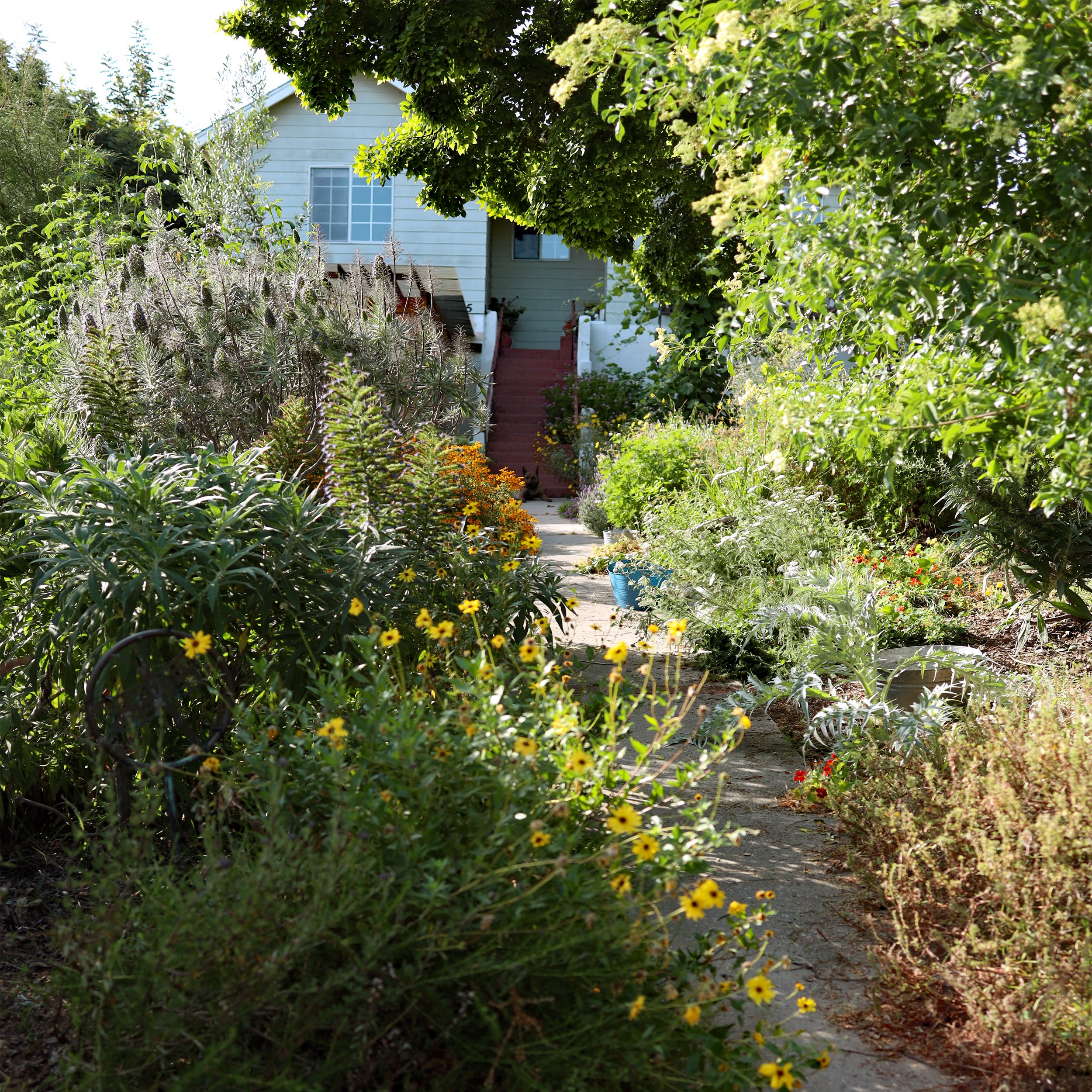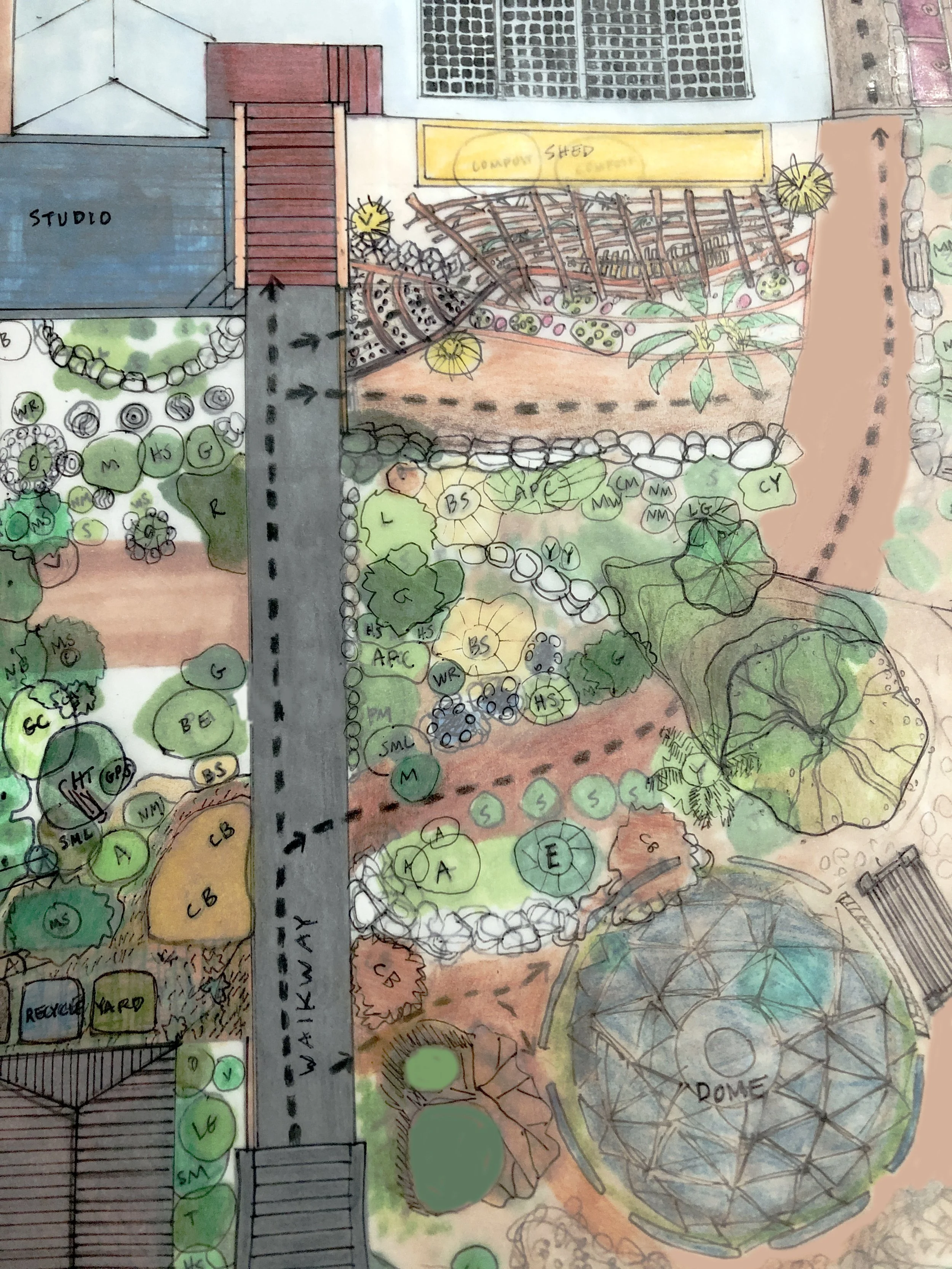canvas 5025
2016 - Present
land care plan
Canvas 5025 attempts to offer respite from the noise and misplaced gifts of a converted urban landscape, within an orchestra of native flora and fauna that we planted after the unhealthy chemically treated railroad ties were removed from the soil. However as Highland Park expands, traffic gets worse, and condominiums continue sprouting, the sounds of birds and the breeze fade into the daily fireworks. As we attempt to reverse these symptoms of colonialism and restore the land, we also understand that we can only attempt to model and educate as land is connected to culture and will always mirror our breath and consciousness. what untune will never offer is a manicured garden as that is not what an active and biodiverse plant ecology in Southern Californian’s Tongva land looks like. what untune attempts to do is listen, pay attention, and receive feedback from the land and the Indigenous people while humbly and actively creating conditions for plants, animals, birds, insects, and microbes to grow and live more healthily. By working towards becoming better weavers, rather than gardeners, we aim to redirect and guide the flows of energy and move away from the language and mindset of a conquest culture. we do not own this land - period.

Always a work in progress as we listen to and learn the needs of the land. The process includes replacing the invasive non-natives with native plants, while supporting our pollinating communities

To the right of Flax Seed (dog) is Vitis Roger's Red grape vine and Encelia californica (Bush Sunflower) that found its way in the cracks of urbanite, and a non-native citronella geranium plant that I keep only in that area as an attempt to keep the mosquitos at a distance from sitting area under the vitus vines

our helpers provide us with the best feedback, this one pollinating the Phacelia Cicutaria (Catepillar Phacelia)

Phacelia Cicutaria (Caterpillar Phacelia) - This annual California flower appears from March to May and melts me each time with their hairy coils resembling caterpillars that uncoil as the flower opens one by one

Encelia Californica (Bush Sunflower) - after blooming (Winter - Spring), the seeds provide food for small seed-eating birds. Does great on south and west facing slopes and a significant member of the Coastal Sage Scrub community

Annual California Spring flowers: Eschscolzia californica (California Poppy ), Clarkia unguiculata (Elegant Clarkia), Gilia capitata (globe gilia), Clarkia amoena (farewell to Spring), and Layia platyglossa (common tidy tips)

Parkinsonia Florida (Blue Palo Verde). The seed pods (not featured in the image) resemble Mesquite and numerous animals find them tasty

More California Wildflower mix with the addition of Nemophila Menziesii (baby blue eyes)

Stachys Bullata (California Hedgenettle) - a perennial herb in the mint family, not drought adapted but does well amidst bioswales and pond margins, and adored by hummingbirds, butterflies, and insects

The Eschscholzia Californicas (California poppies) have been showcasing for two springs now, sprouting out from the cracks between the broken urbanite steps

Eschscholzia Californica (California Poppy) -always an abundance of charm and joy

Euphorbia xanti (Baja Spurge) is a bamboo-like shrub that spreads like rhizomes to form dense colonies that make for an interesting hedge or screen

Artemisia Californica (California Sagebrush) stands tall against the urban backdrop of power lines and palm trees, while the wind carries her earthy aroma, shifting the senses away from the city's pollution. They are also extremely drought adapted and a very important coastal scrub plant

Sambucus mexicana (Blue Elderberry) - an important food source for birds and animals. The Indigenous used the flowers for tea to treat colds and fever. Humans can eat the berries after they are cooked.

Hello shiny beautiful friend! My entomologist buddy A.J.S says she's a kind of katydid nymph, but not sure what species

Canvas 5025 will continue to be a land in progress as changes are made to return the land to our native habitats by replacing some of the non-native invasive species to create more space for native ones.

